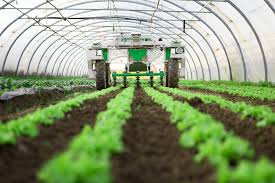Major Crop Pests – Agriculture Notes – For W.B.C.S. Examination.
প্রধান শস্য কীটপতঙ্গ – কৃষি নোট – WBCS পরীক্ষা।
Crop protection is the general method or the practice of protecting the crop yields from different agents including pests, weeds, plant diseases, and other organisms that cause damage to the agricultural crops.Continue Reading Major Crop Pests – Agriculture Notes – For W.B.C.S. Examination.
The Plant Health Committee has recently reviewed the National Priority Plant Pests that are exotic to Australia, under eradication or have limited distribution. These are the focus of government investment and action, including funding through the Priority Pest and Disease Planning and Response. While by no means the only plant pests of biosecurity concern, the National Priority Plant Pests serve to highlight the sort of threats Australia faces. The National Priority Plant Pest will be used to focus national preparedness capability through the development of national action plans.
Apart from crops, agricultural fields would have weeds, small animals like rats, mites, insects, pests, disease-causing pathogens and frequently raided by birds. All these factors are mainly responsible for the loss or damage to the crops. Thus to yield high crop production, farmers need to protect the crop from these pests. Hence crop protection management is important before, during and after the cultivation.
Weeds are unwanted plants growing along with the crops. These undesirable plants, steal the nutrients, sunlight, water and other resources from the crops and affect their growth, which results in the undernourished of crops and decreases the yields. To safeguard the productivity of crops, farmers remove these weeds by a process called weeding.
Weeding is the process of controlling the growth of weeds. There are various methods of weeding:
- Spraying weedicides on the weeds
- Manually plucking the weeds by hands
- Removing weeds by trowel and harrow
- Ploughing the field to remove the weeds even before sowing the seeds
Few examples of weeds are Amaranthus, Cyperinus rotundus, Bermuda grass, etc.
Apart from weeding, Herbicides – a chemical substance also play an important role in controlling the growth of the weeds and also help in preventing soil erosion and water loss.
Pathogenic diseases are another type of crop-damaging factors. Microorganisms like bacteria, fungi, and viruses affect different parts of the crop through various means. Crops could be protected from these diseases by using pesticides and biocontrol agents.
These are crop protection management, which should be followed before and during the cultivation.
Once the crop has reached maturity, it now needs to be harvested. So harvesting is the cutting and gathering of the matured crop. The term harvesting also generally includes the immediate post-harvest practices such as threshing and winnowing. Let us look at both these processes
- Threshing: The process of separating the grains from their chaffs or pods is threshing
- Winnowing: After threshing, we must separate the grains from the chaffs. Winnowing is the process of separating the grains.
There are various factors to consider before the harvesting of crops. The crops need close examination to ensure that harvesting is not premature. This leads to shedding of seeds and loss of crop. If the crops are over-ripened, they may lose their value in the market or may even be unconsumable.
Harvesting in India is generally done manually. Sicles is a tool that is used to cut the crop. This method is a laborious and time-consuming and only suitable for small-sized farms. On larger farms, a harvester is used which combines harvesting with threshing and winnowing.
Cultivated grains must be stored safely to avoid product loss. Chances of grain loss are much higher during this time than before cultivation. Therefore, methods of protection need to be better. Common pests and rodents and some environmental conditions like humidity and temperature are the responsible factors for the loss. Certain precautions help us to prevent this loss. Before storing the grains, it should be cleaned and dried completely in sunlight as it helps in protecting the crops from fungal growth, which is caused by the presence of moisture. Pests could also be killed by a method called fumigation.
According to modern agricultural technologies, there are various tools for managing weeds, insects, and disease. The tools include the applications of pesticides, soil profile, nutrient management etc.
Please subscribe here to get all future updates on this post/page/category/website


 +919674493673
+919674493673  mailus@wbcsmadeeasy.in
mailus@wbcsmadeeasy.in







































































































